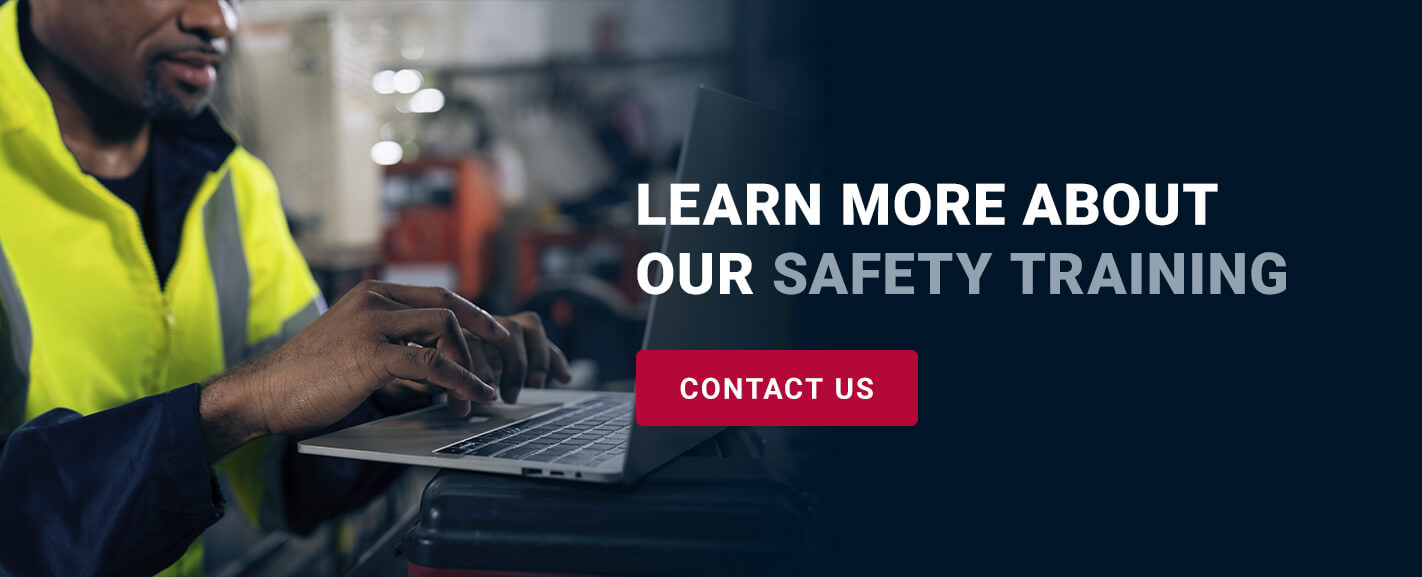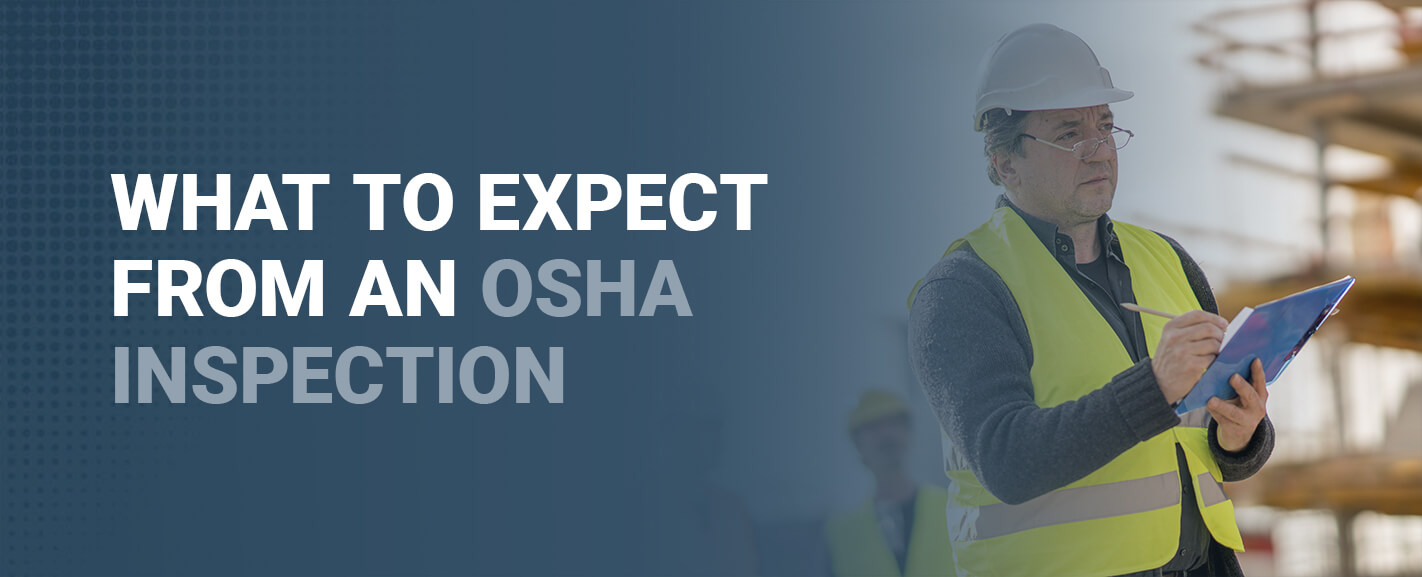
The Occupational Safety and Health Administration (OSHA) conducts inspections frequently across the country. If you believe your workplace will be subject to an inspection, you should learn everything you can about the process to help it go smoothly. Understanding how to pass an OSHA inspection can lessen anxiety about the procedure and help create a safer workplace.
How Does OSHA Decide When to Inspect?
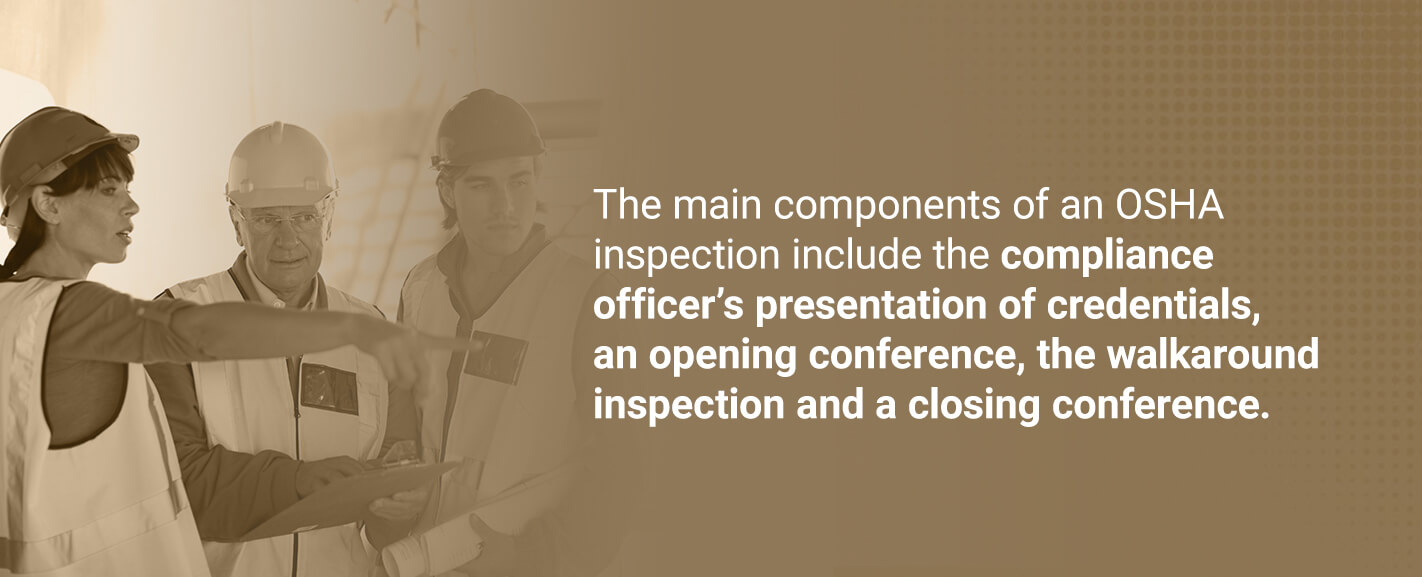
OSHA cannot inspect all seven million workplaces under its jurisdiction all the time. Hence, it will only inspect a business for one of six main reasons:
- Compliance complaint from a worker
- A fatality or severe injury or illness on site
- Imminent danger reports
- Referrals for inspection from media, other government agencies or local groups
- Inspections targeting specific hazards within an industry
- Follow-up inspections
OSHA uses the above reasons to decide which businesses to send an officer to for in-person inspection. This method of narrowing down businesses allows OSHA to better address the most serious hazards that could result in loss of life or severe injuries.
Not all concerns addressed to OSHA will result in on-site inspections. For low-priority issues, OSHA typically requests the complainant’s permission to conduct a phone or fax inquiry. This investigation starts with a phone call and includes a faxed follow-up outlining more information. If the owner of the workplace replies in writing to the fax within five business days describing planned corrections, OSHA may forego an on-site inspection.
For more serious complaints, OSHA will visit the workplace. The inspector does not have to give notice of their visit, except in the following circumstances:
- Management or worker representatives likely won’t be present without notice
- A more thorough investigation of a fatality or other incident is possible from OSHA providing notice
- OSHA suspects imminent danger and believes management can eliminate it faster with notice
- An inspection requires special preparation or must happen after regular business hours
Unless an OSHA employee has one of the above reasons to provide notice, they’re not allowed to give workplaces unauthorized notice of their inspection.
What Are the Components of an OSHA Inspection?
The main components of an OSHA inspection include the compliance officer’s presentation of credentials, an opening conference, the walkaround inspection and a closing conference. Depending on the size of the business, the process may take a few hours to weeks.
The time allotted to each step of the inspection process varies. Most time for an OSHA visit goes to the walkaround inspection. But this is not the only part of the process. An opening and closing conference during OSHA inspection allows the OSHA worker a chance to discuss the procedure with an employee representative and management. These are essential parts of the process to introduce the inspection, explain the reasoning for it, provide information on findings and suggest actions the employer could take.
Throughout the inspection, the OSHA compliance officer will be deliberate and thorough but not waste time. They will minimize the impact on the work environment during their visit and never divulge any trade secrets they see during their time at the business.
Presentation of Credentials From the OSHA Officer
When they initially arrive, the OSHA officer will present their credentials. The inspector’s credentials should include both a serial number and their photograph. If the inspector does not immediately offer their credentials, employers should request to see them. Genuine OSHA employees will happily show their information to the employer.
When in doubt, employers should contact OSHA to verify the officer’s identity. Reports of imposters, who often require payment upfront for the inspection or citations, have occurred. Checking credentials is one way businesses can protect themselves from this type of fraud.
Opening Conference in OSHA Inspection
Officially, the inspection begins with the opening conference. The employer and employee representatives must both attend this meeting. To accommodate both parties, two separate opening conferences may occur if either objects to a joint discussion. If the site has workers from another employer, those employees should have their own representative at the discussion.
During this brief meeting, the OSHA officer outlines the reason for the inspection, what to expect and the responsibilities and rights of everyone present. The OSHA officer also agrees to confidentiality about any proprietary information they see during their visit. The inspector has a right to interview workers during the visit.
Workers have the right to have a representative with the officer during the inspection. Lastly, all employers do not have to pay employee representatives. Employers can pay employees if language in their contracts required it or if the employers agreed to pay employees.
The opening conference is also when the inspector will request to view documents, such as the OSHA-mandated record or work-related fatalities, injuries and illnesses. They may also request other records, such as certificates or trainings, depending on the reasons for the visit and type of business. After the initial introduction and document examination, the inspector will proceed with the business walkaround.
Walkaround Inspection
Both employer and employee representatives can accompany the inspector through the walkaround. They can ask questions of the OSHA officer, including information about how to fix problems. Concerns not outlined in the original inspection scope but are in plain sight, such as a broken stair rail, can still receive citations.
If an issue has an immediate fix, the employer can remedy it at once. While the OSHA inspector must still cite the problem, an employer who fixes the issue leaves a positive impression on the officer.
During the inspection, the OSHA officer may take videos or photographs. Occasionally, officers take samples to measure hazards like fumes, dust and others. Participants are allowed to ask what the tests are for if they’re unsure. They can also request summaries of the sample results.
The inspector may request private interviews with employees as part of the walkthrough, too. Employers have the right to speak confidentially with the inspector about complaints, hazards and past accidents.
Closing Conference in OSHA Inspection
The closing conference wraps up the inspection process a few days to a few weeks after the walkaround. Usually, these conferences occur over the phone to save time, but they can happen in person. The conference may be joint or separate, like the opening one.
At these meetings, the OSHA officer discusses their findings with the employee and employer representatives. The employer will find out about their options, including contesting findings, scheduling an informal conference with OSHA and addressing citations and penalties.
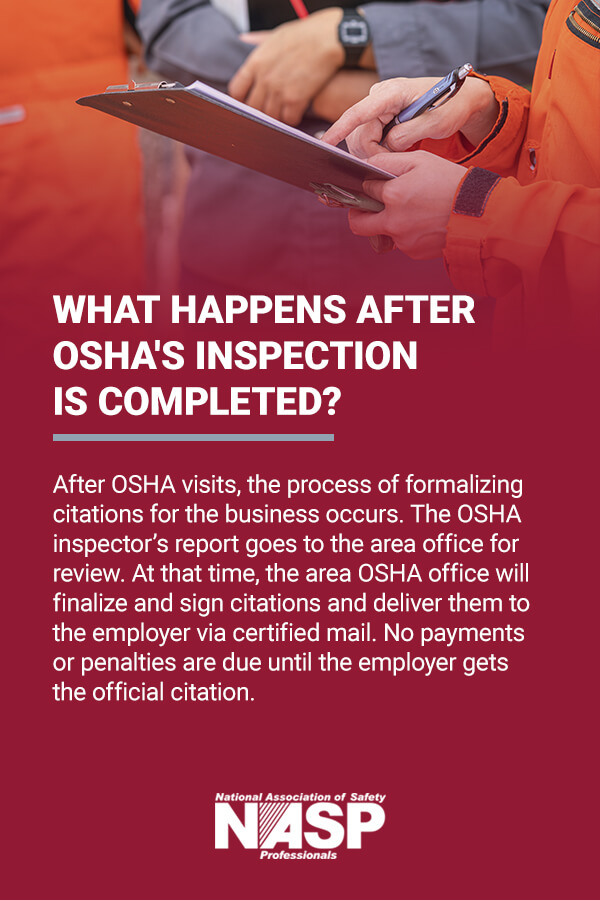
What Happens After OSHA’s Inspection Is Completed?
After OSHA visits, the process of formalizing citations for the business occurs. The OSHA inspector’s report goes to the area office for review. At that time, the area OSHA office will finalize and sign citations and deliver them to the employer via certified mail. No payments or penalties are due until the employer gets the official citation.
OSHA Citations
OSHA has six months from a violation occurrence to cite the business for the problem. Included with the citation is the type and length of time to correct the problem. Types of violations include the following:
- Willful
- Serious
- Other-than-serious
- Repeated
- De minimis
- Failure to abate
The category of the citation relates to the penalty. For instance, failure to abate bears a maximum fine of $14,502 per day after the due date. Serious, other-than-serious or posting requirements carry the same fine per violation.
For willful or repeated violations, the fine is $145,027 per violation. However, OSHA may adjust penalties for employers of smaller businesses or those who show good faith in fixing the issues. Willful violations cannot receive adjustments for good faith actions.
The citations mentioned by the OSHA officer during the closing conference are not finalized until the employer gets the citation in writing via certified mail. After the creation of this official citation, the employer has 15 days to submit a request for an informal conference. This informal conference provides the employer with another chance to show that they have made a good effort toward making necessary corrections, which may reduce or eliminate existing penalties.
After receiving the official citation, employers must post a notice of the citation at each violation location. These notices inform workers of the OSHA citation. Employers must leave the notices in place for either three workdays or until the problem gets fixed.
The time required to abate each issue will depend on the severity of the problem and its extent. If the time required to fix the problem is longer than three days, the violation postings must remain in place. However, if the employer requires less than three days to fix the problem, the signs indicating the violation must stay in place for at least three full workdays before the employer removes them.
After fixing all violations within the required time, employers must send the certificate of abatement back to OSHA. This certificate indicates the employer put forth effort into fixing all outlined problems. Penalties may still apply, depending on the severity of the issues. However, OSHA’s goal is always to get problems fixed, not to fine companies. Businesses that work hard to keep safe workplaces and fix violations have better chances of paying less in penalties.
OSHA Appeals Process
Employers have the right to contest OSHA citations they do not feel are just. The appeals process has a 15-day limit for the employer to file a request to contest the citation.
Once OSHA receives the appeal, they send the written request to the Occupational Safety and Health Review Commission, which will provide an unbiased, independent assessment of the appeal. While awaiting the ruling from the commission, employers must still fix any serious violations before the required abatement date. Violations the employer does not contest or correct become final.
Preparation for an OSHA Inspection
While OSHA rarely announces their inspections, all businesses can take steps to prepare for an inspection and increase the chances of the process going smoothly.
Maintain Good Documentation of Everything
The OSHA officer will examine all records of incidents, worker injuries, trainings, certificates and potential hazards on site. Companies that do not have adequate recordkeeping often lack one of the following OSHA-required documents:
- Chemicals used on-site
- Process safety management with hazard assessment
- Emergency action plan (EAP)
- Lockout/Tagout audits
- Hazard communication training with current chemicals used on-site
- Employee records of exposure to toxic substances or hazardous situations (noise, chemicals, vapor, mold or dust)
- OSHA 300 log of work-related illnesses, injuries or fatalities
- Lockout training for authorized personnel
- Personal protective equipment (PPE) training
- Certificates with written PPE hazard determination
- Noise exposure training
- Bloodborne pathogen training
- Written training program for powered industrial vehicles
- Electrical safe practices training
- Respirator training, updated annually
- Training for confined spaces
OSHA does not require disciplinary records, but these can be good to have on hand in case a potential citation stems from worker action. If the employee had already experienced disciplinary action for something that may result in an OSHA citation, the records can show that the employer tried to take action to correct the issue.
Safety Training
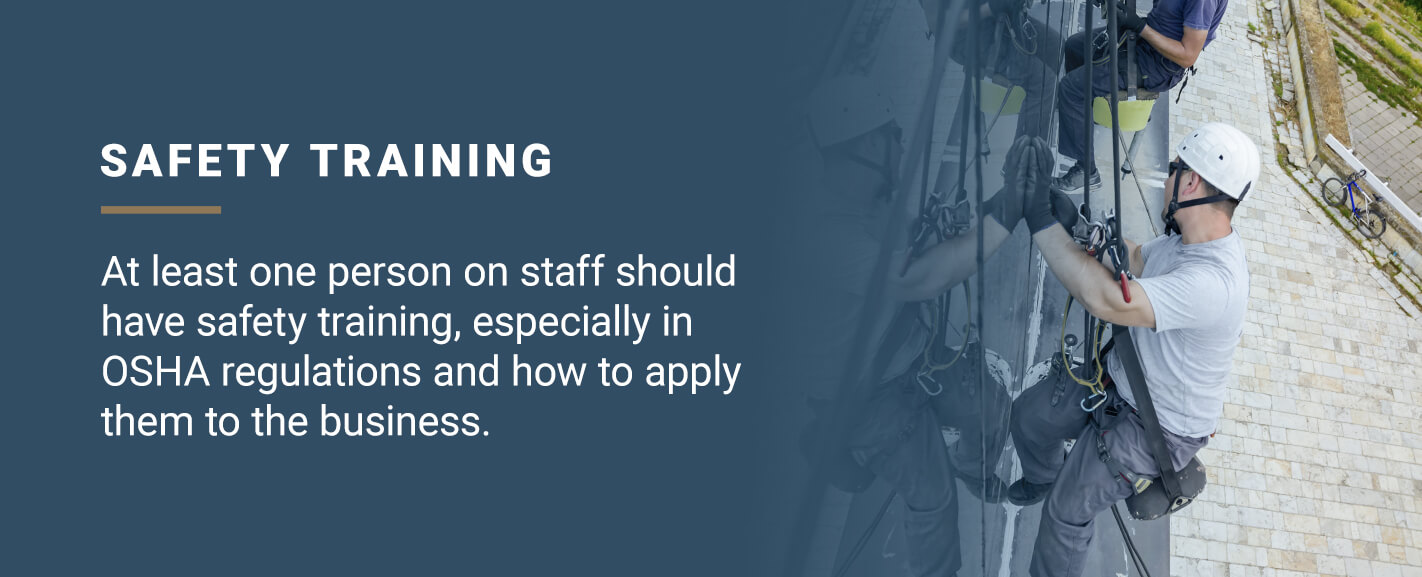
At least one person on staff should have safety training, especially in OSHA regulations and how to apply them to the business. This safety expert should take the training information to generate a safety culture within the workplace.
Better safety in the workplace can reduce accidents, worker compensation payments, worker dissatisfaction and OSHA violations. While having a well-trained safety officer in charge of optimizing workplace safety won’t guarantee a business will never have an OSHA inspection, it may reduce the chances of receiving OSHA citations for safety violations.
Designate Employee and Management Representatives for the Inspection
Even without warning of OSHA inspections, businesses should appoint at least one worker representative, often from the union, and a management member to act as host. The host for the OSHA inspector should maintain neutrality but be open to any suggestions made during the inspection.
OSHA officers note when employers — or their designated hosts — are cooperative, well-organized and prepared for an inspection. These traits leave a positive impression on the OSHA officer.
Learn More About Our Safety Training
OSHA inspections can happen to any workplace. By having a safety culture at work, the chances of an inspection or citations lessen. One way to initiate such a culture is through creating a safety officer position and providing them with practical training in OSHA regulations and applying them to the workplace.
Taking classes that lead to certificates, such as the Certified Safety Manager (CSM) course, can educate the safety officer and other staff on OSHA rules, regulations and methods for improving workplace safety. The information in the course and teaching techniques for the classes matter.
Choose an instructional provider that has a proven method of teaching adults to learn and retain the information required. At the National Association of Safety Professionals, we have interactive, dynamic trainings that make the learning process simple with information safety officers and others can use.
NASP offers several courses, including our CSM course. We offer a practical approach to workplace training with courses created by safety professionals for safety professionals. Sign up with us at NASP today to take full advantage of our resources.


